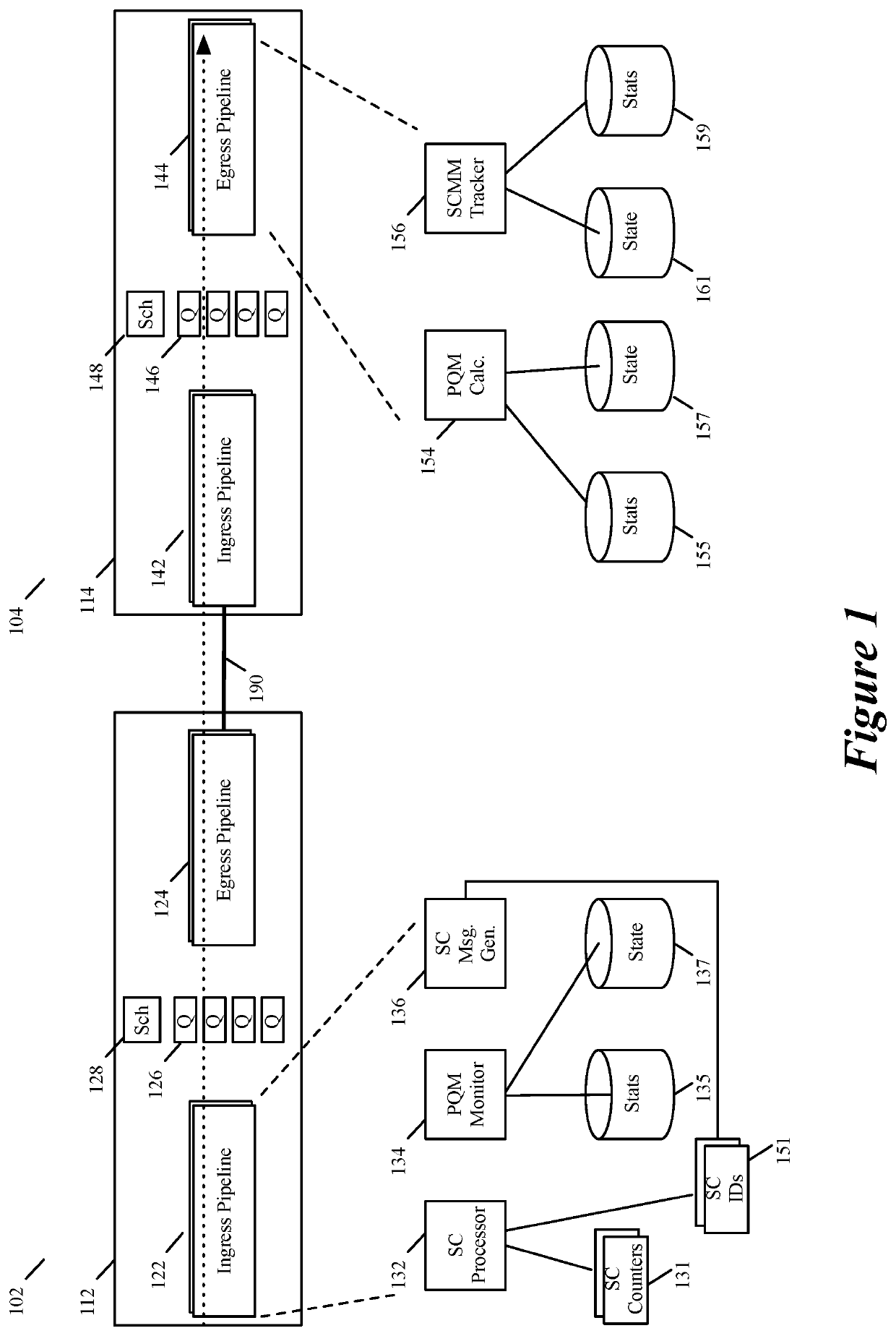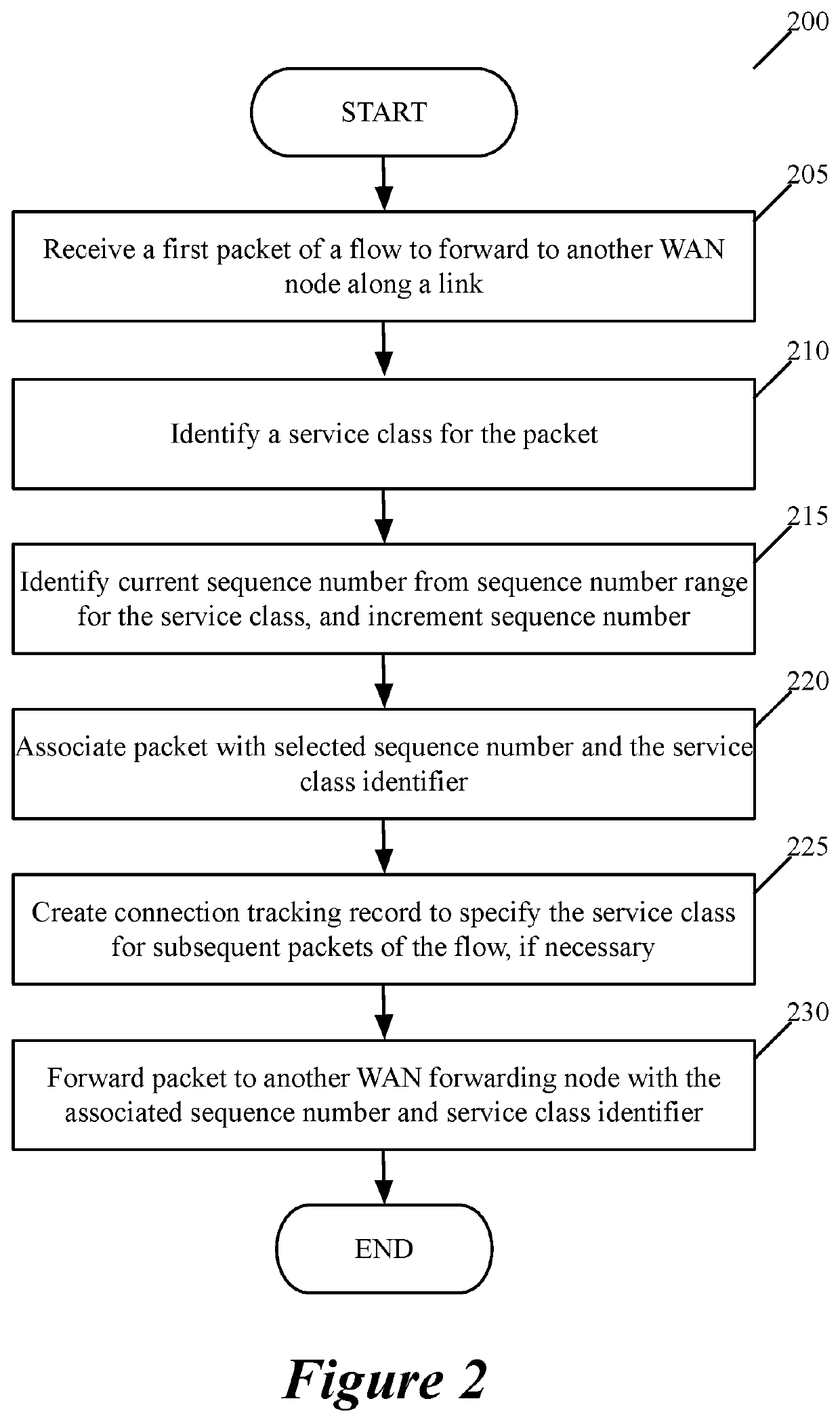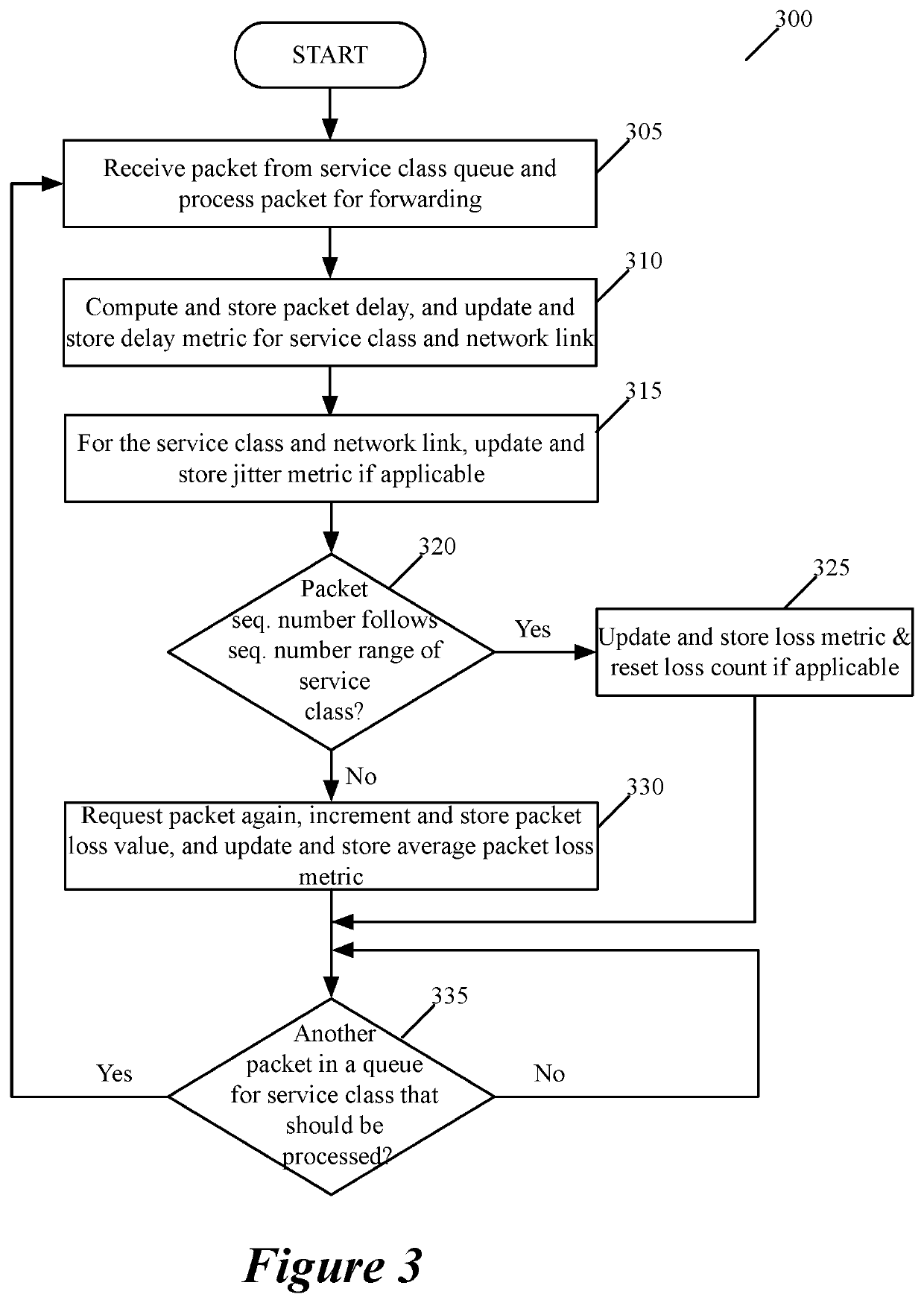Dynamically assigning service classes for a QOS aware network link
a network link and dynamic assignment technology, applied in the field of dynamic assignment of service classes for a qos aware network link, can solve the problems of inability to easily apply common methods in qos aware links, inability to properly address the problem of qos aware link error resilience, etc., to achieve the effect of increasing the egress rate of the forwarding nod
- Summary
- Abstract
- Description
- Claims
- Application Information
AI Technical Summary
Benefits of technology
Problems solved by technology
Method used
Image
Examples
Embodiment Construction
[0049]In the following detailed description of the invention, numerous details, examples, and embodiments of the invention are set forth and described. However, it will be clear and apparent to one skilled in the art that the invention is not limited to the embodiments set forth and that the invention may be practiced without some of the specific details and examples discussed.
[0050]Some embodiments of the invention provide methods for improving the use of the service classes provided by a link between first and second forwarding nodes in a wide area network (WAN). The different service classes in some embodiments are associated with different quality of service (QoS) guarantees that the WAN offers to the packets. Examples of such guarantees include throughput, uptime reliability, etc. A network link with two or more service classes is referred to below as a QoS aware link.
[0051]To improve the usage of a QoS aware link with multiple service classes, some embodiments treat each servi...
PUM
 Login to View More
Login to View More Abstract
Description
Claims
Application Information
 Login to View More
Login to View More - R&D
- Intellectual Property
- Life Sciences
- Materials
- Tech Scout
- Unparalleled Data Quality
- Higher Quality Content
- 60% Fewer Hallucinations
Browse by: Latest US Patents, China's latest patents, Technical Efficacy Thesaurus, Application Domain, Technology Topic, Popular Technical Reports.
© 2025 PatSnap. All rights reserved.Legal|Privacy policy|Modern Slavery Act Transparency Statement|Sitemap|About US| Contact US: help@patsnap.com



